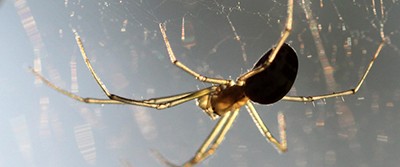Engineered Fungus Kills Malaria Mosquitoes with Spider Toxin

By Mike Howie
In Burkina Faso, a landlocked country in West Africa, researchers are fighting nature with nature. They genetically engineered Metarhizium pingshaense, a fungus that’s known to infect and kill mosquitoes, to make it even more potent in an effort to slow the spread of malaria. The new version of the fungus produces a spider bite toxin called Hybrid in the presence of hemolymph, the mosquito version of blood. In an experiment, the fungus all but eliminated a population of insecticide-resistant mosquitoes in two generations. On a larger scale, it could help control malaria-carrying mosquitoes.
In 2011, researchers used engineered fungi related to M. pingshaense to infect and kill mosquitoes and their malaria parasites. They chose these fungi because they’re specific to mosquitoes — it doesn’t harm people, animals, or other insects. But because fungi don’t hold up well in heat or under ultraviolet light, they needed to be tested under real-world conditions.
Enter the MosquitoSphere
To house their experiment, researchers created the MosquitoSphere — a giant frame divided into three sections and covered with two layers of mosquito netting. Each section had a hut with a black cloth coated in sesame oil hanging on one wall. One hut had a cloth with no spores, another had normal spores, and the third had spores engineered to produce the spider toxin. Each hut was then filled with 1,000 adult male mosquitoes and 500 adult female mosquitoes.
The mosquitoes in the huts were grown from larvae and eggs of Anopheles coluzzi, an insecticide-resistant species of mosquito that were gathered locally. Males and females were included to promote mating, which allowed the researchers to study the effects of the fungus over multiple generations. The females must feed on blood to lay eggs, so the researchers introduced calves to the huts for three nights each week. The mosquitoes could rest on the cloth after feeding.
After 45 days, the results were clear. The hut without fungus was swarming with mosquitoes — 921 hatched in the first generation and 1,369 hatched in the second generation. The second hut, with normal fungus, had fewer: 436 in the first generation and 455 in the second generation. And in the third, nearly all the mosquitoes were eliminated: 399 hatched in the first generation, but only 13 from the second generation survived into adulthood. With so few individuals, the mosquitoes couldn’t form a mating swarm and were effectively wiped out.
The researchers repeated the experiment three times during the rainy season, which spans from June to October, and saw similar results each time. But the team still needs to work out many variables, including where to hang the cloth for the best results. They’ll also need to study whether or not the fungus will be equally effective against other species of mosquitoes that carry malaria. If so, the fungus could be combined with insecticides or other treatments to help combat the disease.
Fighting Against Evolution
Malaria is endemic to many of the world’s warmer climates. In 2017, The World Health Organization reported that it infected nearly 219 million people in 87 countries and killed 435,000. Africa has been hit hardest by the disease — the continent was home to 93 percent of malaria infections and 93 percent of malaria deaths that year.
Many organizations use insecticides to kill malaria-carrying mosquitoes and slow the spread of the disease. But because the insects reproduce so quickly, they evolve to be unaffected by the poisons. The new engineered fungus provides another way to stay ahead of evolution.
Discussion Questions
- What other methods have been or could be used to fight mosquitoes that carry malaria?
- What makes malaria more common in some areas than it is in others?
Vocabulary
- Endemic
- Hemolymph
- Insecticide